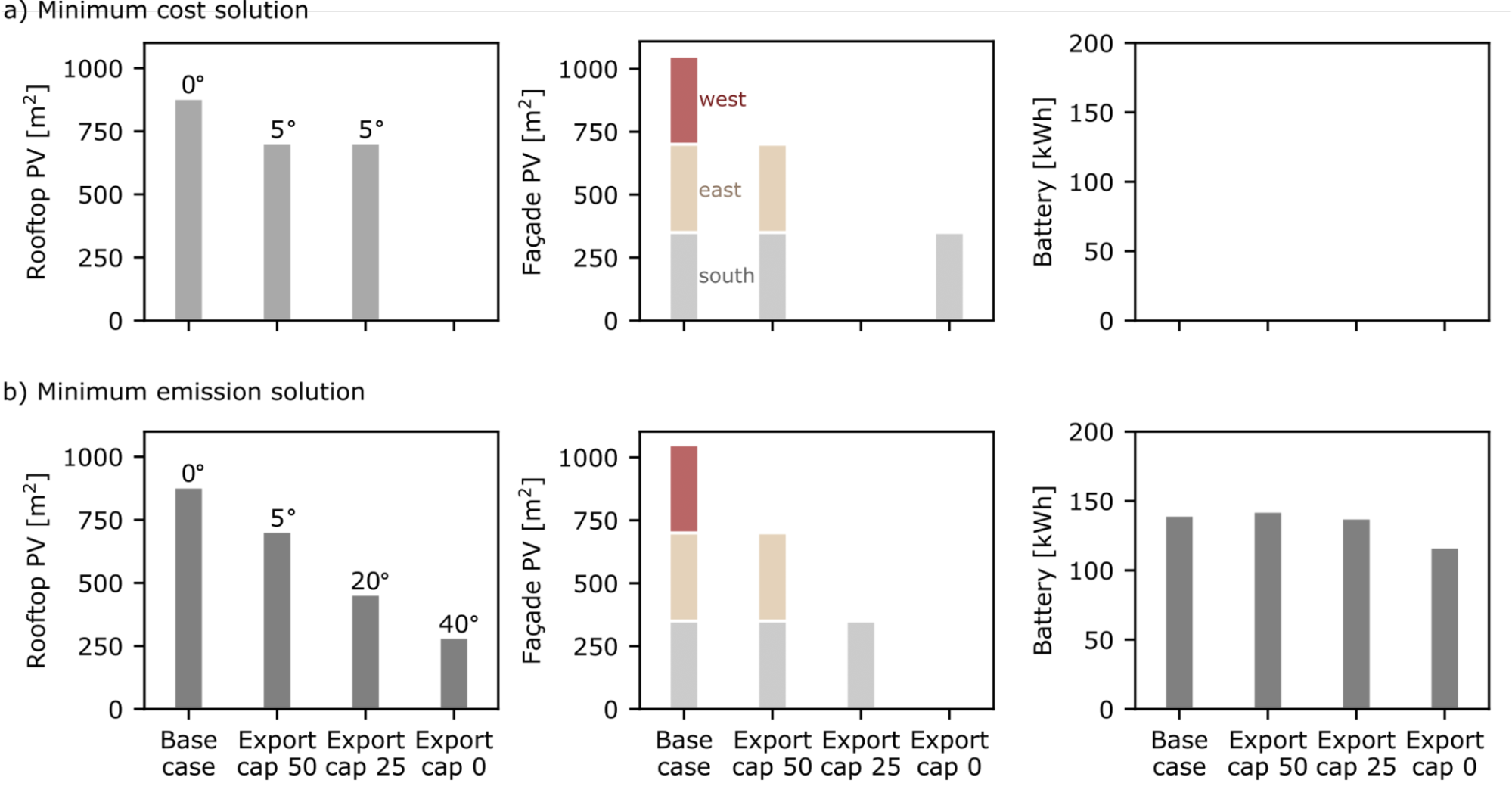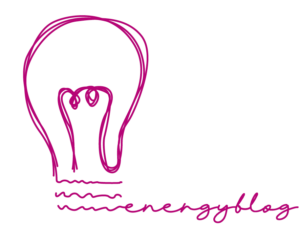With the Swiss energy transition underway, homeowners might consider investing in a photovoltaics (PV) system. However, the optimal PV system design depends on the homeowner’s preferences: We show that if the primary goal is to save money, one might favor larger PV installations, but if the main goal is to reduce the carbon footprint, a smaller PV system with a battery may offer greater long-term benefits. We also show that in a future where there might be limits on the amount of electricity that can be exported to the distribution grid, homeowners might opt for smaller PV systems.
Photovoltaic (PV) systems are expected to play a major role in the Swiss energy transition, but homeowners considering installing a PV system face some key decisions, such as deciding on the size of their PV system, whether to tilt their rooftop PV panels, and whether to install a battery. The optimal system design may vary with the homeowner’s reason for considering a PV system: Whilst some homeowners might be interested in lowering their energy bill, others might be motivated by a desire to lower their emissions and thus contribute to the Swiss energy transition. Moreover, the policy landscape for residential PV in Switzerland might change, with Swiss distribution system operators calling for a limit on the electricity that PV owners can feed into local electricity grids to avoid line overloads during peak production times. Such policy changes might further impact the trade-offs in the optimal PV system design. In this analysis, we examine the optimal design of the PV system for homeowners that prioritize costs and emissions under multiple scenarios that limit the electricity exports to the local distribution grid and draw recommendations for homeowners.
Increasing shares of residential PV will likely require export limits
With increasing shares of residential PV systems, there will likely be situations where many households export excess PV electricity to the local distribution network at the same time. This could, for example, happen at 12 pm on a sunny summer day, when the PV electricity generation exceeds the households’ electricity demand at that time. Such situations can lead to congestion in local distribution networks, resulting in power line overloads and destabilizing the grid. To prevent such scenarios, Swiss distribution network operators are proposing to limit the sale of excess PV-generated electricity to the grid, in the following referred to as export limits. In Australia, for example, such export limits are common, with some distribution network operators even entirely prohibiting electricity exports by PV owners. Such export limits greatly impact the financial viability of PV systems. While it is still uncertain whether such restrictions will be implemented in Switzerland, in a recent study, we investigated how export limits influence the cost- and emission-optimal PV system designs for prospective PV owners in Switzerland.
How to identify the optimal PV system design
To examine how export limits might impact residential PV systems that are cost- or emissions-optimal, we developed an optimization model that determines the optimal rooftop and east-, west-, and southward-facing facade PV installations, and the optimal battery installation for a mixed-use building in Dübendorf, near Zurich (see Figure 1). The annual electricity and heat demand of the case study building are around 100 MWh and 200 MWh, respectively, with the heat demand fully being met by a heat pump. The model determines the optimal size of all PV installations and of the battery installation and accounts for the emissions produced in the production process of all technologies. Moreover, the rooftop PV system can be tilted. This tilt angle is important because by tilting the rooftop PV system, the timing of the electricity production can be shifted, for example, from midday to the afternoon, which might help to better align the electricity production with the local electricity consumption patterns. However, this comes at a cost. By tilting the rooftop PV system, the overall electricity production volume decreases, leading to a tradeoff between the timing of electricity production and the overall production volume.

Figure 1: Schematic of the residential solar PV systems with optional battery storage considered in this study. The size of the rooftop PV is optimized, as well as the size of the east-, west-, and southward-facing facade PV systems. Moreover, a battery system can be installed. Note that the rooftop system can be tilted to shift the electricity production to different times of the day.
We assess increasingly strict policy cases, from a base case with no export limits to a case where no exports are allowed. Between these cases, we linearly vary the maximum power that PV owners can export, which is capped at 50% and 25% of the original value, respectively (see Table 1).
Table 1 Scenario descriptions
| Scenario | Description |
|---|---|
| Base case | Electricity export is not limited |
| Export cap 50% | Electricity export to the grid is limited to 50% of the PV power in the base case |
| Export cap 25% | Electricity export to the grid is limited to 25% of the PV power in the base case |
| Export cap 0% | Electricity cannot be exported to the grid |
Figure 2 presents the optimal size of all technologies, as well as the tilt angle of the rooftop PV system for all scenarios. The top row illustrates the cost-optimal results, whereas the bottom row shows the emissions-optimal system design for the different export limit scenarios.

Figure 2: Optimal design of the PV systems for increasingly strict export limits along the x-axis for the cost-optimized system (top row) and the emissions-optimized system (bottom row). The scenarios are summarized and described in Table 1. Rooftop tilt angles are indicated with a number on the corresponding bar.
Prioritizing costs vs. emissions when designing PV systems
Our results suggest that homeowners face trade-offs in deciding whether to maximize cost- or emissions savings, and that recommendations are also strongly impacted by strict export limits. If there are no export limits, we find that cost-optimized systems favor large installations of rooftop and facade PV (>750 m2). Mild export limits have a limited impact on the optimal system design, indicating that such policies might be suitable tools to avoid distribution grid overloads that do not impact the financial viability of residential PV systems. Even in the case that exports are limited to only 50% of the electricity of the unrestricted case, the impact on the optimal system design is relatively small. However, with tighter export limits, the size of cost-optimized PV installations decreases. Installing a battery is not cost-optimal under these circumstances. Thus, cost-oriented homeowners should refrain from battery installations and instead invest in large PV installations to reduce their electricity bills and generate additional income from selling electricity to the grid. Note that this recommendation might change if the feed-in tariffs are reduced, as is currently considered by Swiss policymakers, which might make batteries more cost-competitive.
Homeowners who prioritize emissions reductions are recommended to install a battery to be able to use the generated electricity locally instead of exporting it to the grid. With increasingly strict export limits, the emissions-optimal size of PV systems tends to reduce, and we observe higher tilt angles for the rooftop PV systems. Overall, we find that emissions-oriented systems tend to consume a higher percentage of the produced electricity themselves, meaning that they have a higher self-consumption than cost-optimized systems.
To conclude, policies limiting electricity exports to distribution grids might significantly influence the adoption of residential PV in Switzerland, but only if the policy design is very strict. Without export limits, cost-conscious homeowners should prioritize large PV systems without batteries. For emissions-conscious homeowners, the installation of batteries is crucial, enabling higher self-consumption and reducing their carbon footprints. Note that in case feed-in tariffs for PV systems are reduced, financial incentives might shift towards favoring self-consumption and battery installations might become financially beneficial even for cost-optimal system designs.
We further find that mild export limitations might offer a good compromise between limiting the negative impacts of high shares of residential PV systems on the local distribution networks whilst having a limited impact on the cost- and emissions-related benefits of such systems. However, strict export limits that limit the amount of electricity that can be exported to only 25% of the electricity in the unrestricted case or even allow no exports at all, strongly reduce the financial incentives for large PV systems. Aligning energy policies with decentralized solutions will thus be vital to maximizing cost savings and emission reductions of residential PV systems whilst ensuring the safe operation of local electricity distribution networks. If you would like to learn more about our model or its results, please refer to our original research article published in Energy and Buildings.



